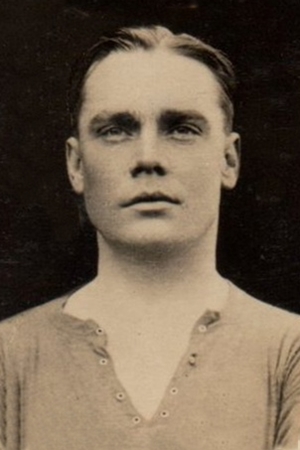
George Hector Taylor was an English professional football outside right who played in the Football League for Brentford and Millwall.
During the 1920–21 English football season, Brentford competed in the Football League Third Division. It was Brentford's inaugural season in the Football League and ended with the club successfully applying for re-election.
During the 1921–22 English football season, Brentford competed in the Football League Third Division South. The club improved on its debut season in the league to finish 9th, which would be its highest placing until 1929–30.
During the 1922–23 English football season, Brentford competed in the Football League Third Division South and finished in 14th place.
During the 1923–24 English football season, Brentford competed in the Football League Third Division South and finished in 17th place.
During the 1926–27 English football season, Brentford competed in the Football League Third Division South. In Harry Curtis' first season as manager, the club finished 11th and advanced to the fifth round of the FA Cup for the first time.
During the 1931–32 English football season, Brentford competed in the Football League Third Division South. Despite leading the division for two months in mid-season, the Bees fell away and finished 5th.
During the 1935–36 English football season, Brentford competed in the Football League First Division for the first time in the club's history. A torrid run in the opening half of the season left Brentford in the relegation places, but after a number of key signings were made, just two defeats from Christmas Day 1935 through to the end of the season elevated the Bees to an impressive 5th-place finish, the club's highest-ever in the league pyramid. Brentford also reached the final of the London Challenge Cup for the second consecutive season, but were beaten by league rivals Arsenal. In 2013, the Brentford supporters voted 1935–36 as the club's third-best season.
During the 1936–37 English football season, Brentford competed in the Football League First Division and secured a 6th-place finish, one place below the previous season's club record highest league position.
During the 1938–39 English football season, Brentford competed in the Football League First Division. A six-match unbeaten run in February and March 1939 pulled the club clear of a near-certain relegation.
During the 1945–46 English football season, Brentford competed in the Football League South, due to the cessation of competitive league football for one further season following the end of the Second World War in Europe in May 1945. A return to competitive cup football came in the form of the first FA Cup staged since before the war, with the Bees advancing to the sixth round and equalling the club record.
During the 1946–47 English football season, Brentford competed in the Football League First Division. The Bees' 12-year run in the First Division ended with relegation to the Second Division after a disastrous season, which tied the club record for fewest league victories and most league defeats. The club did not play again in the top-tier until 2021–22, 74 years later.
During the 1947–48 English football season, Brentford competed in the Football League Second Division. In the Bees' first second-tier season since 1934–35, the club slumped to a 15th-place finish.
During the 1941–42 English football season, Brentford competed in the London League, due to the cessation of competitive football for the duration of the Second World War. Despite scoring over 80 goals in what proved to be a forgettable league season, the Bees won the London War Cup with what was the club's only victory at the old Wembley Stadium.
During the 1919–20 English football season, Brentford competed in the Southern League First Division. In the first season of competitive football since the end of the First World War in November 1918, Brentford consolidated with a mid-table finish. It was the club's final Southern League season, as 21 of the 22 First Division clubs were voted into the new Football League Third Division in May 1920.
During the 1913–14 English football season, Brentford competed in the Southern League Second Division. Despite winning 13 of 15 matches in the first half of the season, a loss of form in a five-week spell from February through to April 1914 ended the club's chances of an immediate return to First Division.
During the 1954–55 English football season, Brentford competed in the Football League Third Division South. In the club's first season back in the third-tier since 1932–33, the Bees finished in mid-table. The season was memorable for the debuts of youth products Jim Towers and George Francis, who went on to dominate Brentford's goalscoring charts until 1961.
During the 1958–59 English football season, Brentford competed in the Football League Third Division. Despite 32 goals from Jim Towers and 22 from George Francis, a number of defeats to low-placed clubs early in the season prevented the Bees from finishing higher than 3rd, one place away from promotion.
During the 1960–61 English football season, Brentford competed in the Football League Third Division. An abundance of draws led to a 17th-place finish and it was the last of seven seasons to feature the "Terrible Twins" strike partnership of Jim Towers and George Francis.
During the 1961–62 English football season, Brentford competed in the Football League Third Division. Financial cutbacks and a reduction in size of the playing squad led to Brentford's relegation to the Fourth Division for the first time in the club's history.


